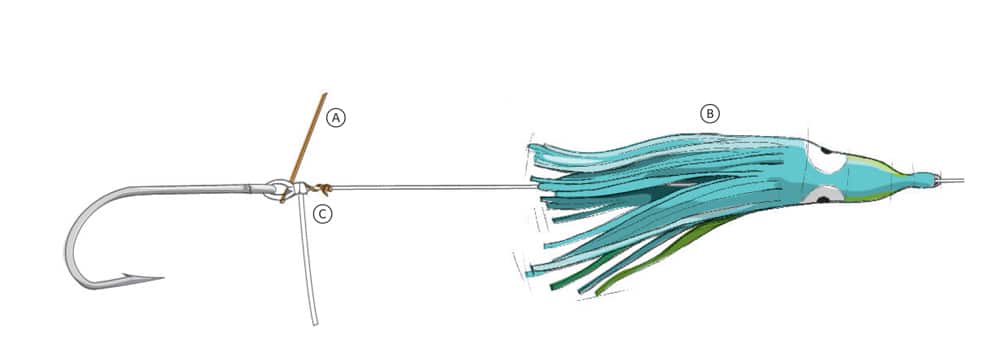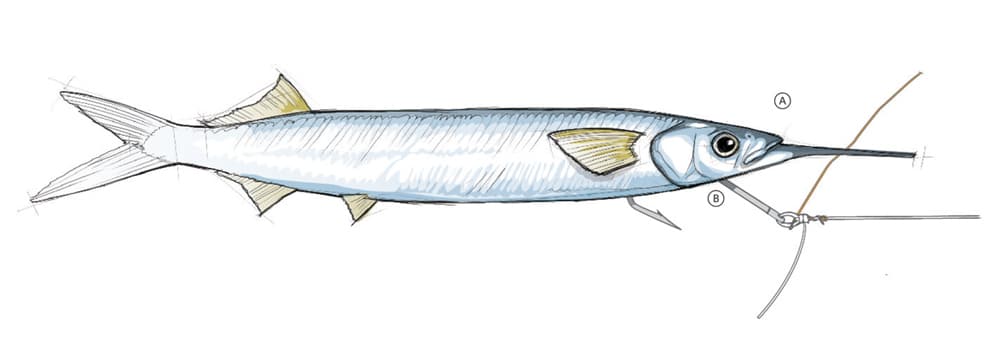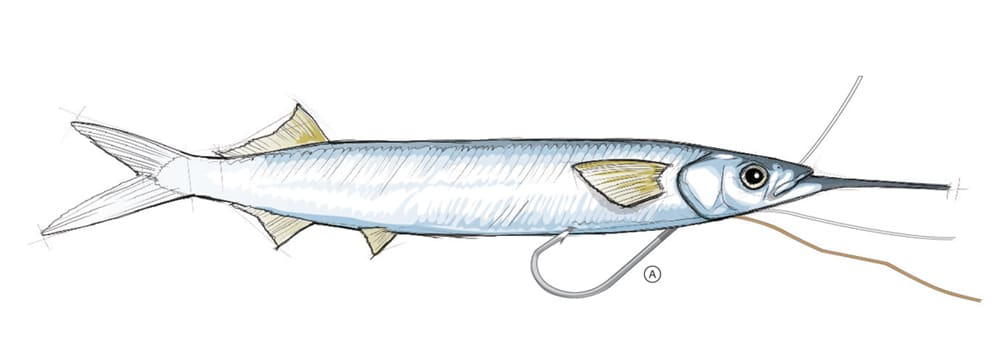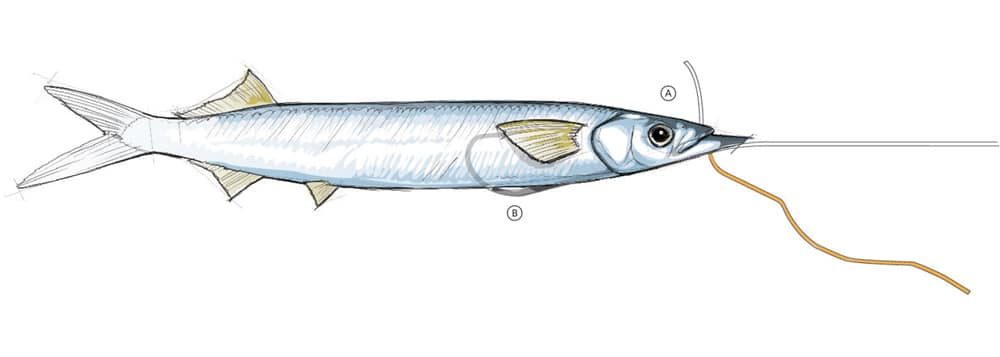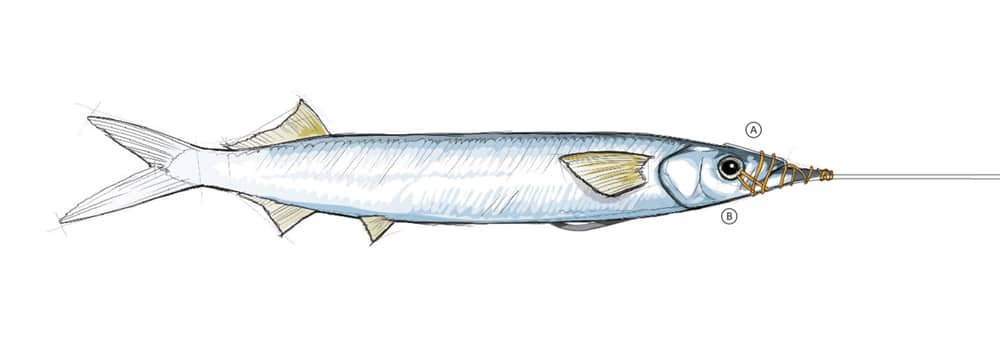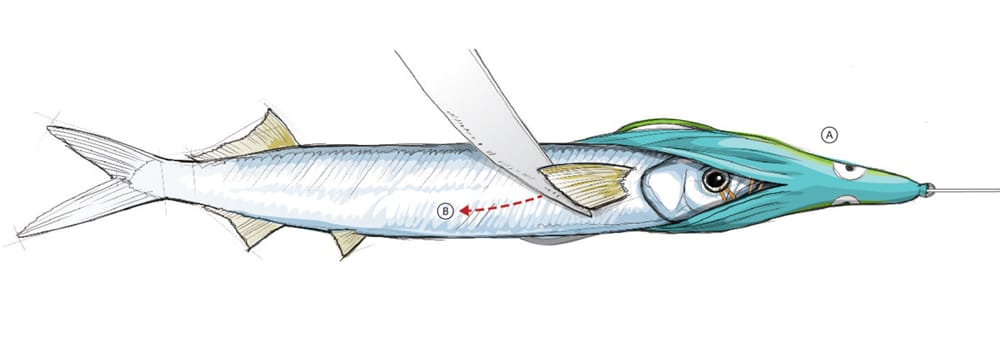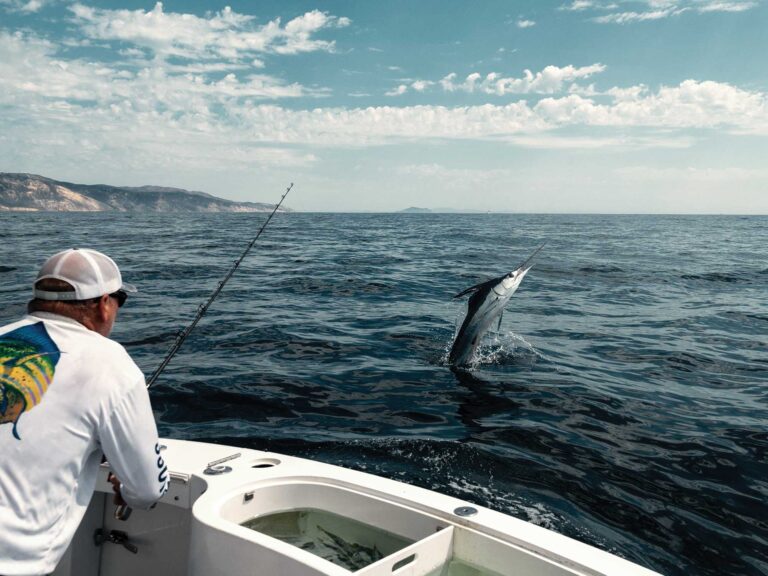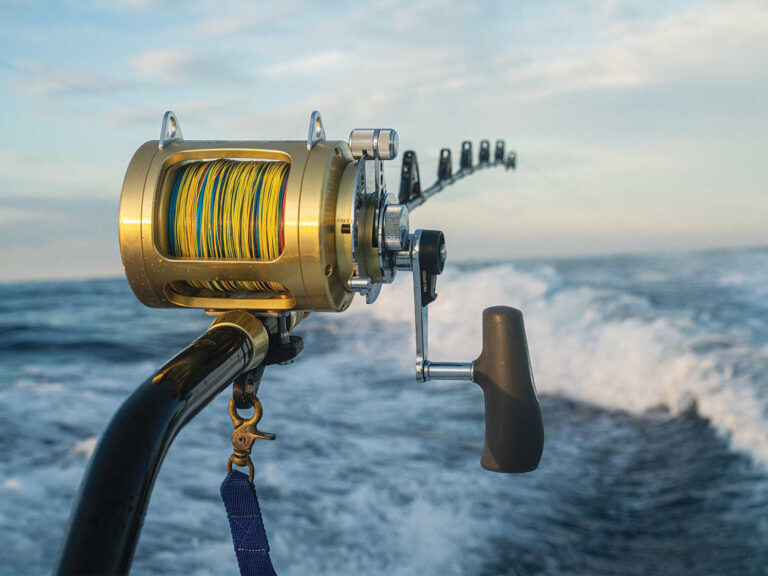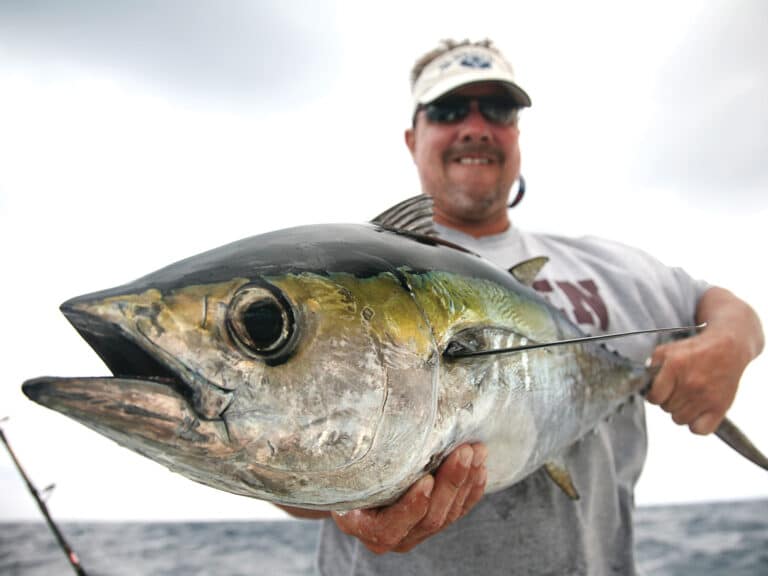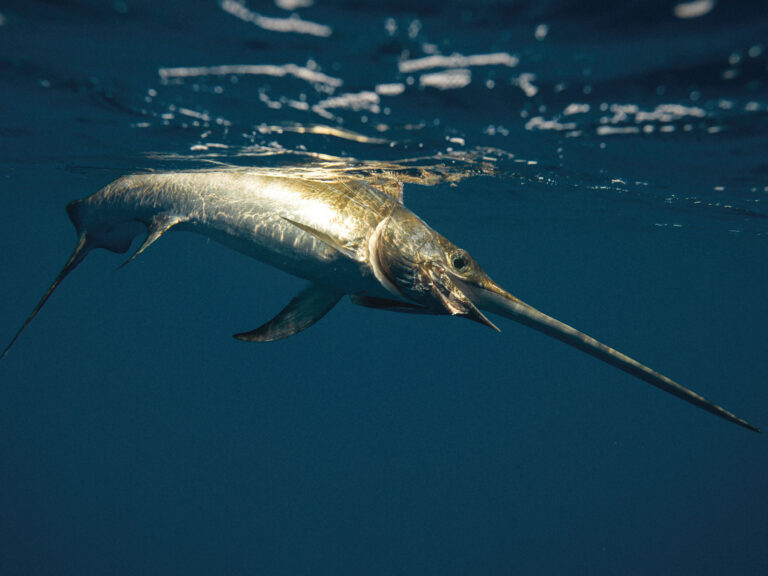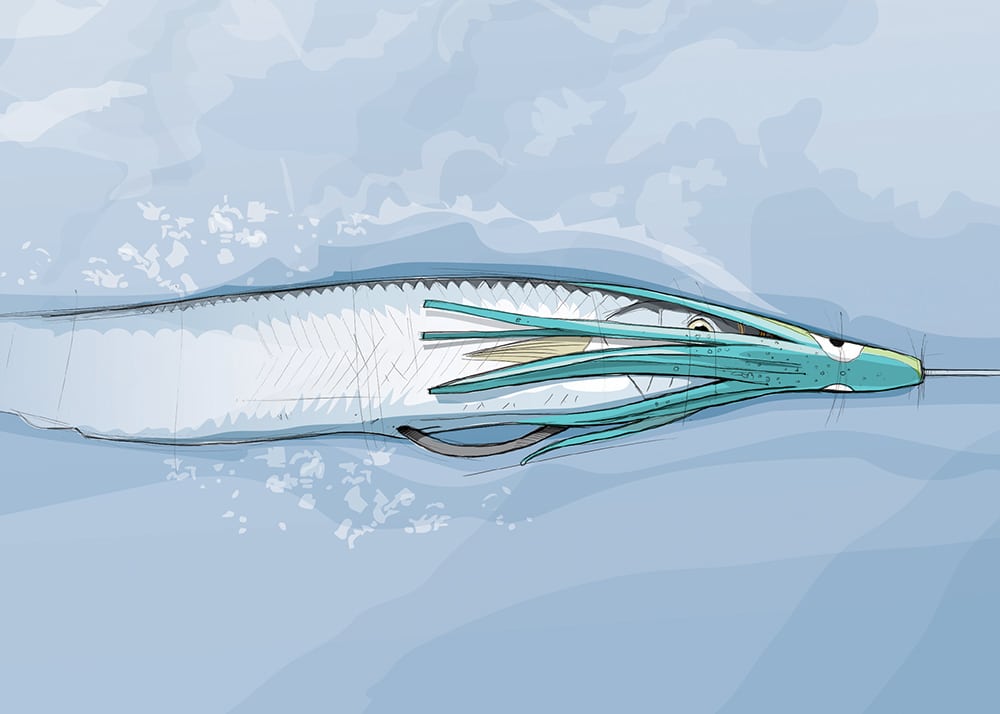
Stop fighting the weeds offshore. Those often annoying patches that put the brakes on trolling also offer prime game fish habitat, so rig your ballyhoo to fish through them.
Just a few short years ago, offshore anglers complained about the lack of sargassum weed, particularly off the Florida Keys and portions of the Gulf Coast, and how it impacted dolphin catches. After this past season, these same anglers are still concerned; only this time, it’s over the masses of weed blanketing the offshore waters. Opposed to textbook-perfect weed lines and patches with clean fishing lanes, these thick, floating ecosystems make trolling a nightmare. Following a frustrating past season, where we spent way too much time picking salad off our trolling baits, I went back to a trick I used many years ago, when weeds were a menace: the weedless ballyhoo.
When properly rigged, these baits spend more time where they belong: skipping enticingly behind your boat. We’ve enjoyed solid dolphin action on the troll since making the switch.
The trick involves inverting the hook point so it goes back into the ballyhoo, and streamlining the rest of the rig so it pushes weeds aside. Some might question hookup percentages, given the embedded point. However, the crushing jaw power of dolphin and other pelagics easily exposes the hook for a solid set. Even so, we’ll lightly scale the bait around the hook-insertion area to soften it some.
NOTE: Sliding a skirt over the snap swivel connecting the leader and fishing line also prevents it from collecting weeds. What’s more, the skirt over the swivel lends the illusion of the ballyhoo chasing a smaller bait.
Instead of running away or continuously clearing weeds from your baits, sit back, relax, and let the weedless ballyhoo go to work.
Components (for dolphin): Leader: 100-pound fluoro or mono; O’Shaughnessy-style hook (size based on bait); copper rigging wire; squid-style skirts (smallest that will still fit over the ballyhoo head).
